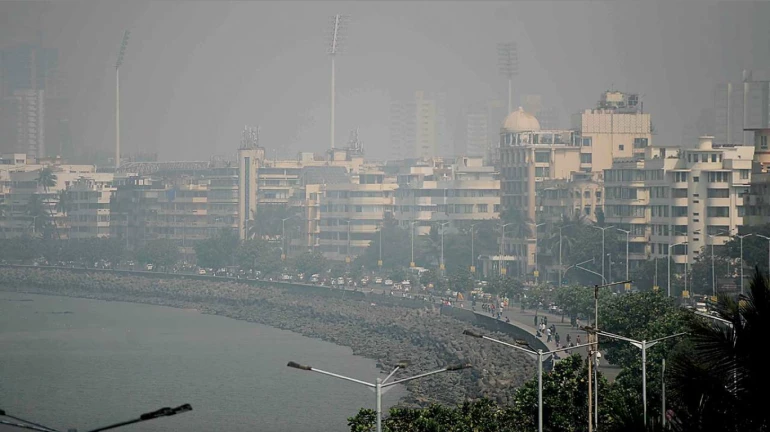
Tiny, deadly particles in Mumbai’s air from the transport sector have nearly doubled over the past five years making it now the biggest contributor to the city’s already deteriorating air quality.
A 2019-20 source estimation analysis for PM2.5 pollutant by the System of Air Quality Weather Forecasting And Research (SAFAR), under the Indian Institute of Tropical Meteorology (IITM) Pune, has revealed that the share of PM2.5 emissions coming from the transport sector was 30.5% in 2019-20 as compared to 16% in 2016-17.
Air has suspended particulate matter (PM) of different sizes. Many of these are a complex mixture of dust, pollen, soot and smoke and they are hazardous. Of this, PM 2.5 is the smaller kind, with a diameter, not more than 2.5 micrometres (fine particles). PM2.5 is considered to have a very significant health impact as it can stay in the air for days or weeks, and is small enough to invade the lung airways.
Source of your Air pollution worries
As per SAFAR, the contribution to PM2.5 emission from different sectors between 2019-20 was 30.5% from the transport sector, 18% from industries & power sector, 15% from residential burning which includes residential cooking in households and slums, trash burning, cow dung burning, emission from street vendors, wood burning, etc.
The remaining sources polluting Mumbai’s air with more PM2.5 particles include windblown dust (15%) and other sources (21.5%) including municipal solid waste (MSW) plants, MSW open burning, crematories, aviation sector, incense sticks, brick kilns etc.
A similar source estimation for PM2.5 pollutants by SAFAR in 2016-17 had shown transport accounted for 16% while industry & power was the biggest contributor at 36%. Other sources included residential burning at 27%, and windblown dust at 21%.
Dr Gufran Beig, Senior Scientist & Founder Project Director, System of Air Quality Weather Forecasting And Research (SAFAR) said, “Transport sector has shown a drastic increase over five years as a sector contributing to PM2.5 pollution in Mumbai. This is a combination of both an increase in the number of vehicles in Mumbai and more stagnation at traffic junctions leading to congestion.”
Major cities like Delhi, Mumbai, Pune etc. are witnessing a significant rise in the number of vehicles over the past decade, said Beig. “However, while in Delhi there is more adoption of compressed natural gas (CNG) among public transport vehicles and even private ones, the same has been very less across Mumbai. The majority of the vehicles continue to be petrol and diesel,” he added.
What do experts have to say?
In Mumbai, new industries or power plants are not being set up but the source which is growing continues to be vehicles, said Anumita Roy Chowdhury, executive director-research and advocacy, Central for Science and Environment. “Even though we have to see the exact numbers, the latest source apportionment analysis seems logical that the transport sector is the rapidly growing source,” she said.
Even as early as 1982, a comprehensive study - Level of Air Pollution in Bombay - published in the Indian Journal of Environmental Protection had suggested that automobiles were the major culprit leading to air pollution. “The urgent task is to reduce the number of cars and their movement in the city. It should not be difficult to provide an efficient public transport system,” the study had noted.
Almost 40 years later, Chowdury highlighted that it was ironic that Mumbai had such a large dependence on the suburban rail network meeting such a huge commuting demand. “The city has not been able to leverage its overall public transport system both in terms of metro and suburban rail etc. to reduce the dependence on private vehicles,” she said.
Beig pointed out that Mumbai was lucky to be surrounded by the ocean from three sides, which helps in the swift dispersion of pollutants. “However, now the alarm bells are ringing. We are approaching a tipping point where these natural factors will no longer make any difference to the overall pollution scenario. Thus addressing sector-wise emission is key to the air pollution problem for Mumbai,” he said.
Mumbai has 40 lakh vehicles as of today
According to the Maharashtra transport department, Mumbai surpassed the landmark figure of 40 lakh vehicles earlier this year with 11.6 lakh private cars and around 24 lakh two-wheelers. In 2016-17, the total number of vehicles stood at 30.69 lakh while the number was 20.28 lakh in 2011-12.
The Economy Survey report 2020-21 Maharashtra noted that Mumbai accounted for 10.3% of the state’s vehicle registrations. Additionally, Mumbai's vehicle density is now over 2,000 vehicles per km, which means more traffic congestion and more air pollution can be expected in the years to come.
Toxic gases such as NO2 are formed by burning coal, oil, and emissions from vehicles that worsen respiratory conditions. “We know motorisation is big and Mumbai being the financial capital is a location where the transport sector is bound to increase. However, it also points to the fact vehicular exhaust contributes to extremely high toxic exposure because of the proximity of the source to us and is a serious matter of concern for our health,” said Chowdhury.
How Mumbai should address rising Transport emissions:
• Control tailpipe emissions through an old vehicle phase-out policy especially for commercial vehicles, and in addition to that a scrappage policy for the city
• Mumbai as a city aggressively requires an Electric Vehicles Policy beyond one for the state that has a targeted mandate for segment-wise (two-wheeler, three-wheeler, four-wheeler etc.) electrification quickly overtime
• Strong on-road emission monitoring system with remote sensing technology (which is already a mandate under the National Clean Air Action Plan)
• Mobility strategies under city management plan - scale up the public transport system, multi-modal integration supported by walking and cycling infrastructure, dedicated parking policy with a focus on air quality, low emission zones, and increased pedestrianisation
ALSO READ: Maharashtra state gears up to act on air pollution





